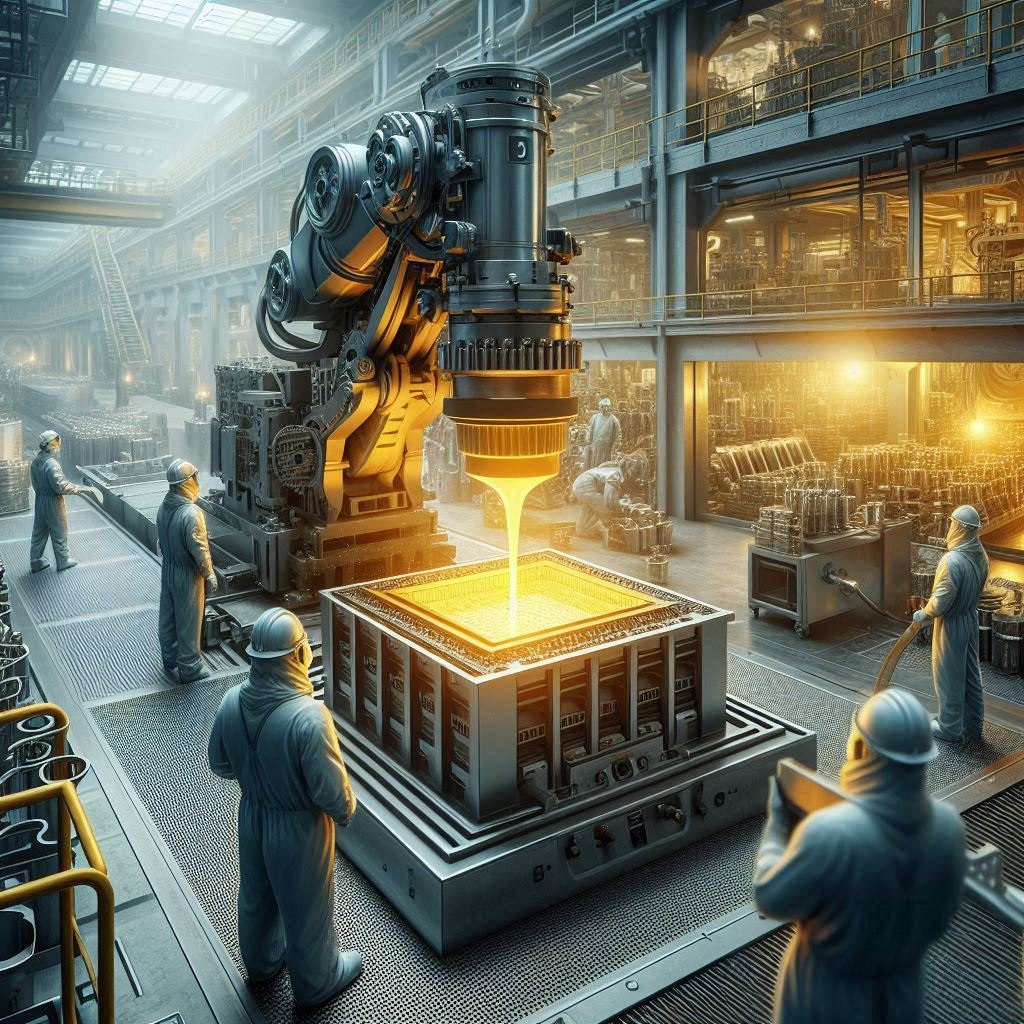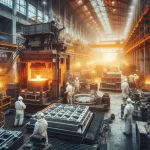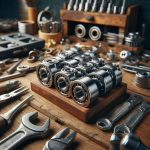In today’s competitive industry the need for intricate, durable and high accuracy components has never been higher. New advancements in precision investment casting, or lost-wax casting, is a go-to for industry in need of complex designs with close tolerances, and excellent surface finish. By leveraging centuries-old casting methods and new technologies precision investment casting produces metal components that are low cost for the consumer, and dependably manufactured for important applications in automotive, aerospace, defense, oil & gas, and engineering.
What is Precision Investment Casting?
Precision investment casting is a process of making complex parts. The process involves making a wax model of the part, and applying a refractory ceramic material coating, then removing the wax through heat, resulting in a mold cavity. The molten metal is poured into the mold, resulting in a casting essentially closest to the design. Follow-on machining or finishing can be applied if desired, otherwise, designs are pretty much net-shape, with good accuracy and surface quality.
Advantages of Precision Investment Casting
There are a number of important advantages in the precision investment casting process, which contribute to its tremendous versatility and effectiveness as a manufacturing process. The design flexibility of precision investment castings allows for the manufacturing of thin walled, intricate shapes and complex geometries that would be a challenge to create using conventional processes. It is able to maintain high precision, tight tolerances, and repeatable geometry, eliminating the need for extensive machining. The precision investment castings process produces a quality of surface finish which minimizes the secondary treatments needed to finish a component and maximizes efficiency. The process is inherently versatile with regard to raw materials as it can entail stainless steels, carbon steels, aluminum, nickel alloys, bronze, and even superalloys, making it a viable option for any application. Cost efficiency is realized as the investment casting technique employs near-net-shape production, which optimized material usage and waste. Finally, the strong repeatability of investment castings ensures consistent quality, whether producing low volumes of parts or high volumes of components. Today, manufacturers in a number of critical industries continue to utilize the precision investment casting process, a proven resource.
Applications of Precision Investment Casting
Improved precision investment casting is used across multiple industries requiring durability, performance, and precision. In the automotive and transportation sector, precision investment casting manufactures engine components, turbocharger wheels, brackets, and suspension parts that endure high stress and wear. In the aerospace and defense sector, precision investment casting produces turbine blades, aircraft fittings, weapon parts, and other safety-critical parts requiring precision. In the oil and gas and petrochemical production industries, precision investment casting produces valve bodies, pump impellers, and flow-control parts that endure high pressures and corrosive environments. In the marine and power generation industries, precision investment casting produces corrosion-resistant fittings, turbine parts, and heat resistant alloys for long life.
Lastly, in general engineering and tools, precision investment casting is used to manufacture industrial machinery components, heavy-duty hardware and specialized tools. In other words, precision investment casting is a practical solution for demanding applications.
Why Choose Precision Investment Casting?
The precision investment casting process is a great option for manufacturers of high value-added components with strict tolerance and durability requirements. By providing parts with complex shapes, with great surface finishes, and with consistent reliability, precision investment casting will decrease the amount of machining, and the lead-time of component production. Additionally, precision investment casting allows for a broad range of alloys to be used, which makes it versatile across many industries, and specifications.
The Future of Precision Investment Casting
Due to innovations in automation, robotics, and 3D printing of wax patterns, precision investment casting is moving forward rapidly. Manufacturing is moving to more sustainable practices, shorter turnaround times, and improved material properties to fulfill the increasing global demand for aerospace, defense, medical devices, renewable energy, and automotive.
Conclusion
Precision investment casting continues to be one of the best and most adaptable methods of manufacturing for producing quality metal parts. Its unique combination of design adaptability, dimensional accuracy, and most importantly materials adaptability makes it a preferred manufacturing process across the globe and across all industries. As technology continues to improve and advance precision investment casting will remain a critical process for modern engineering and ensuring accuracy, strength, and reliability in significant applications.



